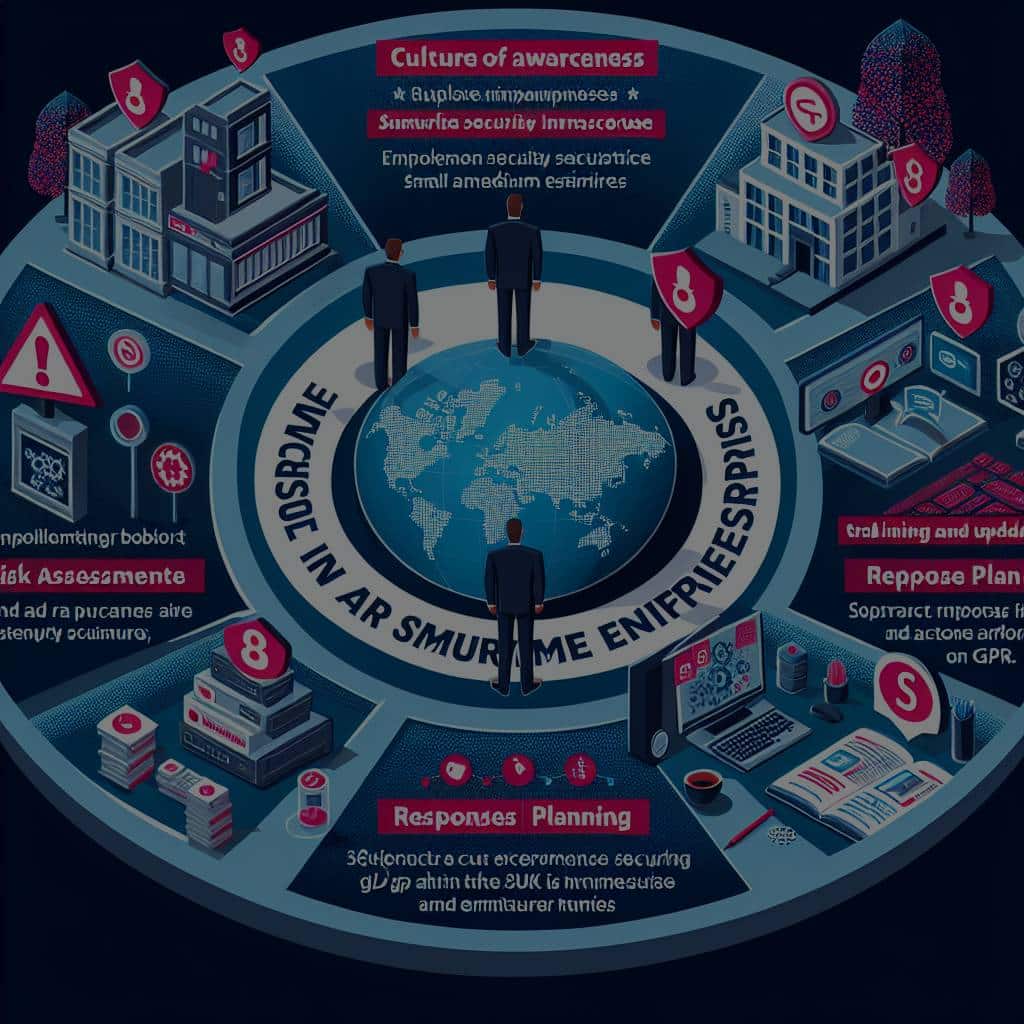In an increasingly digital world, cybersecurity has become a pivotal issue for businesses of all sizes. However, it is particularly crucial for UK’s small and medium enterprises (SMEs). As these enterprises journey through the digital transformation, they become more exposed to potential cyber threats. These can range from data breaches to ransomware attacks, jeopardizing not only the security of their data but also their overall enterprise operation. Implementing best practices in cybersecurity is, therefore, a top priority.
Understand the Importance of Cybersecurity
To start, it’s vital to understand why cybersecurity is so important for your business. Adopting a robust security posture is not just about installing the latest antivirus software. It’s about understanding the scope and scale of cyber threats, the repercussions they can have on your business, and how you can effectively thwart them.
This might interest you : How Can Mental Health Apps Tailored to UK Users Promote Well-Being?
Cyber threats are not limited to large corporations. In fact, SMEs are often targeted because they are perceived as easier targets due to their typically lower levels of security. Moreover, a cyber attack can have devastating consequences, potentially leading to loss of confidential information, damage to your brand’s reputation, or even crippling financial losses.
Understanding these potential threats should motivate your business to take cybersecurity seriously and actively work towards making your network more secure.
In the same genre : How Are Urban Farms Contributing to Sustainable Food Systems in British Cities?
Educate Your Employees
Arguably, one of the most significant vulnerability points in a business’s cybersecurity is the employees. They are the ones who handle sensitive information, access company networks, and use company devices. Consequently, they are often the first line of defense against cyber threats.
Therefore, it is essential to conduct regular cybersecurity training sessions for all your employees. These sessions should focus on the different types of cyber threats, how to identify them, and how to respond effectively. It’s also crucial to educate employees about the company’s cybersecurity policies and procedures.
Remember, knowledge is power. When your employees are well-informed about the potential risks, they are better equipped to protect the company’s digital assets.
Implement Strong Access Control Measures
Controlling who has access to what information is a critical part of cybersecurity. By implementing strong access control measures, you can prevent unauthorized individuals from accessing sensitive information.
This begins with password security. Encourage your employees to create strong, unique passwords and change them regularly. Implement multi-factor authentication wherever possible. This offers an additional layer of security, as it requires users to provide two or more verification methods to gain access.
Further, limit access to sensitive data and systems to only those employees who need it to perform their job duties. Regularly review access privileges and update them as necessary to ensure they remain appropriate.
Regularly Update and Backup Your Systems
Cyber threats are constantly evolving, and so should your security measures. Regularly updating your systems and software is a fundamental step in ensuring your business stays protected against the latest threats.
Software updates often include security patches to fix vulnerabilities that could be exploited by cyber attackers. Failing to install these updates in a timely manner leaves your systems exposed to potential attacks.
Additionally, regular backups are critical. In the event of a data breach or system failure, having a recent backup of your data can be the difference between a minor disruption and a major catastrophe. Make sure to store backups in a secure, offsite location to protect against physical damage or theft.
Use a Secure Network and Control USB Usage
Finally, using a secure network is a given in cybersecurity best practices. This includes using a firewall to block unauthorised access and regularly monitoring your network for any suspicious activity.
Furthermore, USB devices are a common source of malware and other threats. Implement controls over USB usage in your business. This can include blocking unauthorized devices, scanning all USB devices for malware before use, and educating employees about the risks associated with USB devices.
In conclusion, cybersecurity is a critical consideration for all businesses, regardless of their size. By understanding the significance of cybersecurity, educating your employees, implementing strong access control, regularly updating and backing up your systems, and using a secure network, you can significantly enhance your business’s cybersecurity posture. Keep in mind that cybersecurity is not a one-time effort but requires continuous vigilance and improvement.
Develop a Proactive Cybersecurity Strategy
A proactive approach to cybersecurity is key to safeguarding your small or medium-sized business from cyber threats. Contrary to the reactive approach that deals with threats once they occur, a proactive approach anticipates potential threats and implements countermeasures in advance. It includes continuously monitoring business networks, regularly updating security measures, and routinely training employees.
Developing a comprehensive cybersecurity strategy is a cornerstone of this proactive approach. It sets the groundwork for your business’s data protection and outlines the measures to be taken should a data breach occur. A well-crafted strategy goes beyond technical considerations, factoring in the human element, which is often the weakest link in cybersecurity.
Your strategy should include elements like endpoint security for devices connected to your network, cloud-based solutions for data security, and security measures to prevent social engineering attacks. Keep in mind that social engineering is a practice used by cybercriminals to trick individuals into revealing sensitive information, thereby bypassing security measures.
Implementing loss prevention measures should also be included in your strategy. Data loss can happen inadvertently, due to employee errors or system malfunctions, or intentionally, as a result of cyber attacks. Effective preventative measures, such as data encryption and regular backups, can mitigate these risks.
Additionally, consider seeking advice from a reputable cybersecurity consultant or engaging with a security centre to keep abreast of the latest threats and best practices. This can provide your business with a competitive advantage and enhance your reputation as a secure, trustworthy enterprise.
Foster a Cybersecurity Culture
Cybersecurity is not solely a technical or IT department issue. It’s a business-wide concern, and everyone from the CEO to the newest intern has a role to play. Therefore, fostering a cybersecurity culture within your organization is paramount.
This involves making cybersecurity a part of your business’s ethos and integrating it into day-to-day operations. Encourage open conversations about cybersecurity threats and promote the sharing of best practices among employees. Recognize and reward those who exemplify good cybersecurity habits to incentivise others.
Simulated phishing exercises can be effective in testing employees’ knowledge and preparedness. These exercises involve sending out fake, but realistic-looking, phishing emails to see how many employees fall for the bait. This can help identify areas for improvement and reinforce the importance of vigilance.
Furthermore, include cybersecurity in your employee induction programs. New hires should be made aware of the company’s cybersecurity policies, their role in safeguarding the company’s digital assets, and the potential consequences of data breaches.
In Conclusion
To sum up, cybersecurity is an integral part of conducting business in today’s digital world. Small and medium enterprises in the UK must take proactive steps to safeguard their sensitive data and protect their operations from potential cyber threats.
Understanding the importance of cybersecurity, educating employees, implementing robust access control measures, regularly updating and backing up systems, using a secure network, developing a proactive cybersecurity strategy, and fostering a cybersecurity culture are all key components of a comprehensive cybersecurity approach.
Remember, cybersecurity is not a one-off task but an ongoing responsibility. Stay informed about the latest threats, adopt the top tips and best practices, and ensure continuous enhancement of your cybersecurity posture. After all, the safety and success of your business depend on it.






